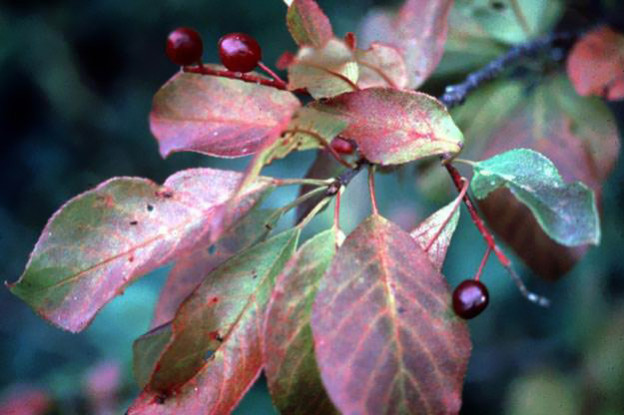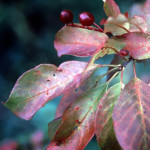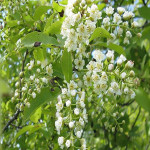Prunus virginiana
Chokecherry (Prunus virginiana) is a deciduous, thicket-forming shrub or small tree commonly found across much of the United States. Varieties native to Oregon include black (var. melanocarpa) and western (var. demissa) chokecherries.
This small, elegant tree can grow anywhere from 12-40 feet tall. It has dangling clusters of small, fragrant flowers in spring to mid summer. The leaves are oval, serrated, 2-4 inches long and pointed at the tip. The fruit is a ¼-½ inch cherry that starts red and becomes purple or black when ripe. Fall foliage is yellow.
Chokecherry is a very valuable tree for wildlife. Many butterflies rely on it for nectar, such as the pale swallowtail, silvery blue, spring azure, and painted lady. Lorquin’s admiral and spring azure butterflies lay their eggs on chokecherries.
- Light Requirements: Full Sun, Part Shade
- Water Requirements: Dry, Moist, Seasonally Wet
- Ease of Growing: Moderate
- Growth Rate: Moderate
- Spreads: Yes
- Wildlife Support: Birds or Mammals
- Fire-resistant: Yes
- Edible: Yes
- Mature Height: 12-40ft
- Mature Width:10-20ft



